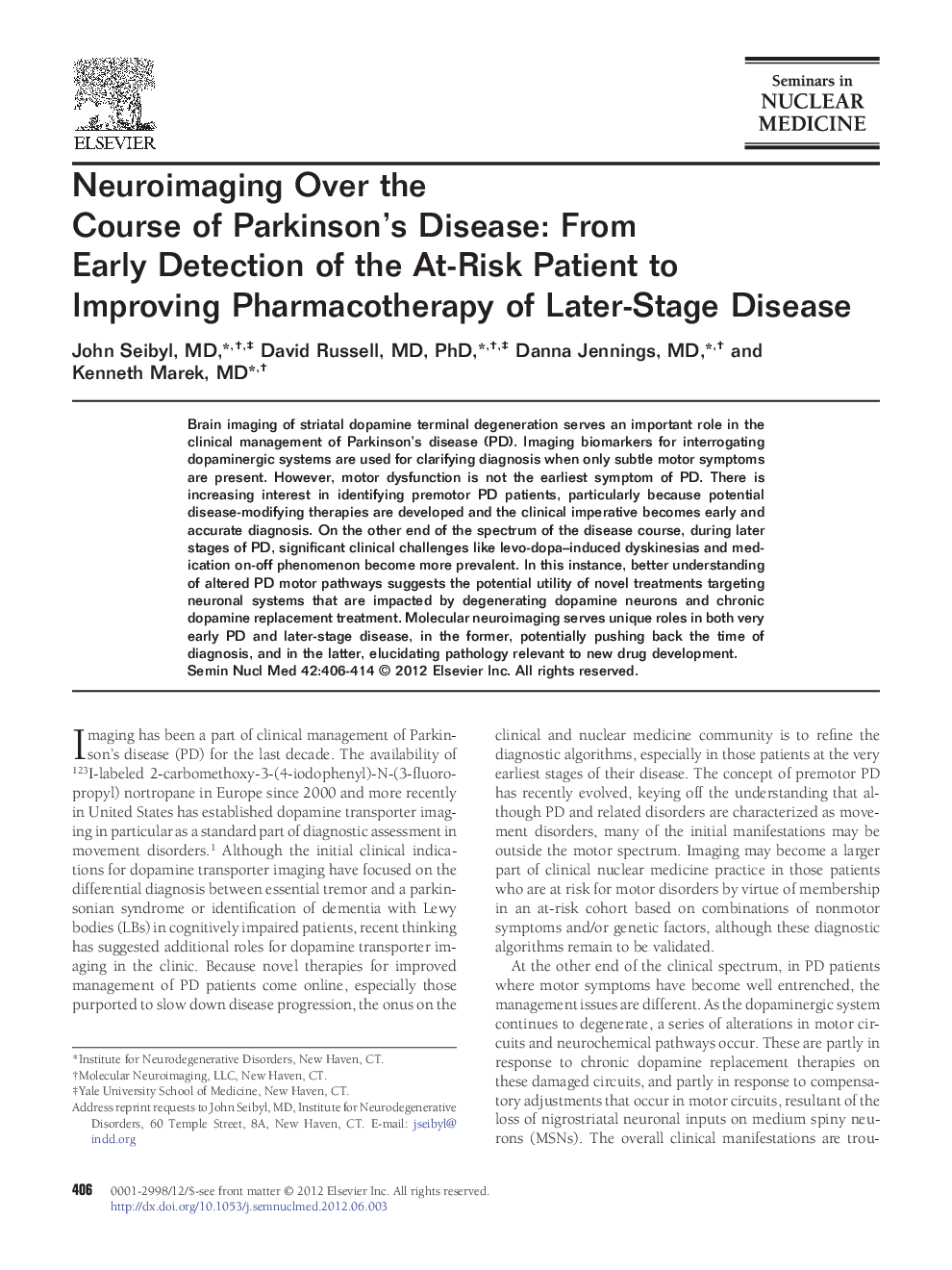| Article ID | Journal | Published Year | Pages | File Type |
|---|---|---|---|---|
| 4251045 | Seminars in Nuclear Medicine | 2012 | 9 Pages |
Abstract
Brain imaging of striatal dopamine terminal degeneration serves an important role in the clinical management of Parkinson's disease (PD). Imaging biomarkers for interrogating dopaminergic systems are used for clarifying diagnosis when only subtle motor symptoms are present. However, motor dysfunction is not the earliest symptom of PD. There is increasing interest in identifying premotor PD patients, particularly because potential disease-modifying therapies are developed and the clinical imperative becomes early and accurate diagnosis. On the other end of the spectrum of the disease course, during later stages of PD, significant clinical challenges like levo-dopa-induced dyskinesias and medication on-off phenomenon become more prevalent. In this instance, better understanding of altered PD motor pathways suggests the potential utility of novel treatments targeting neuronal systems that are impacted by degenerating dopamine neurons and chronic dopamine replacement treatment. Molecular neuroimaging serves unique roles in both very early PD and later-stage disease, in the former, potentially pushing back the time of diagnosis, and in the latter, elucidating pathology relevant to new drug development.
Related Topics
Health Sciences
Medicine and Dentistry
Radiology and Imaging
Authors
John MD, David MD, PhD, Danna MD, Kenneth MD,
